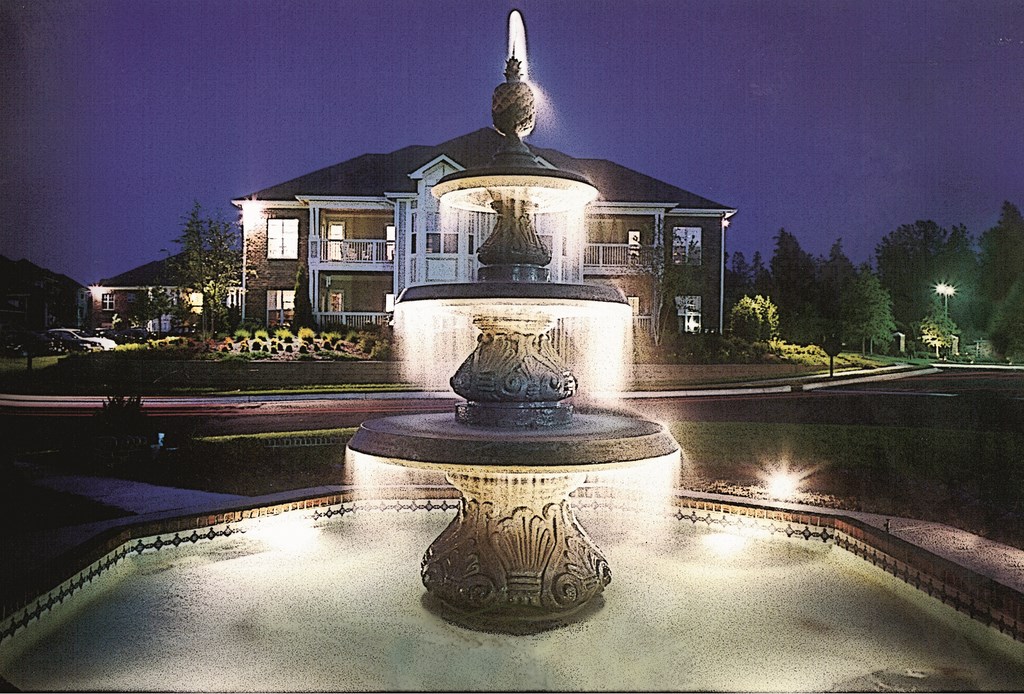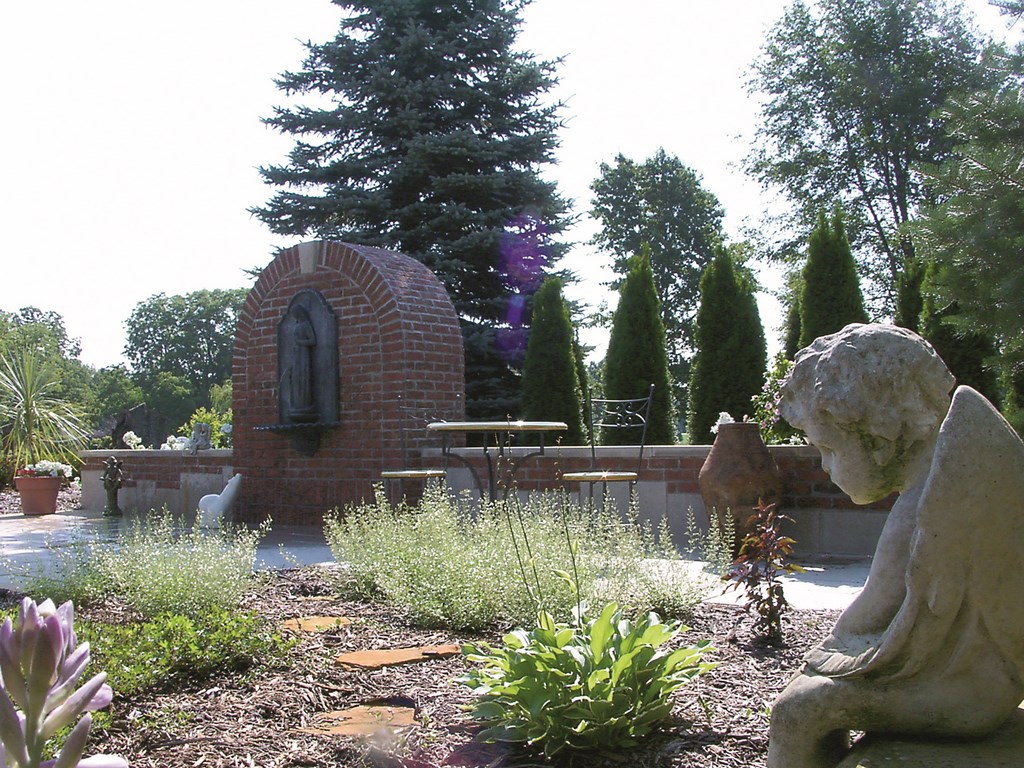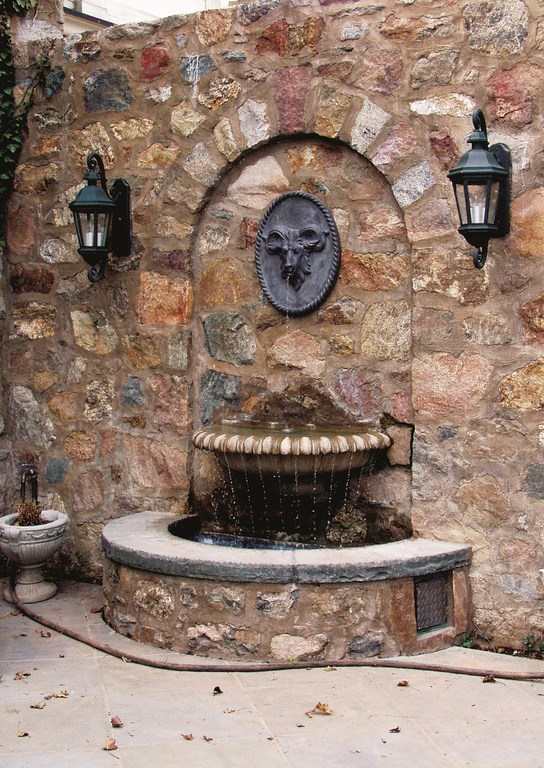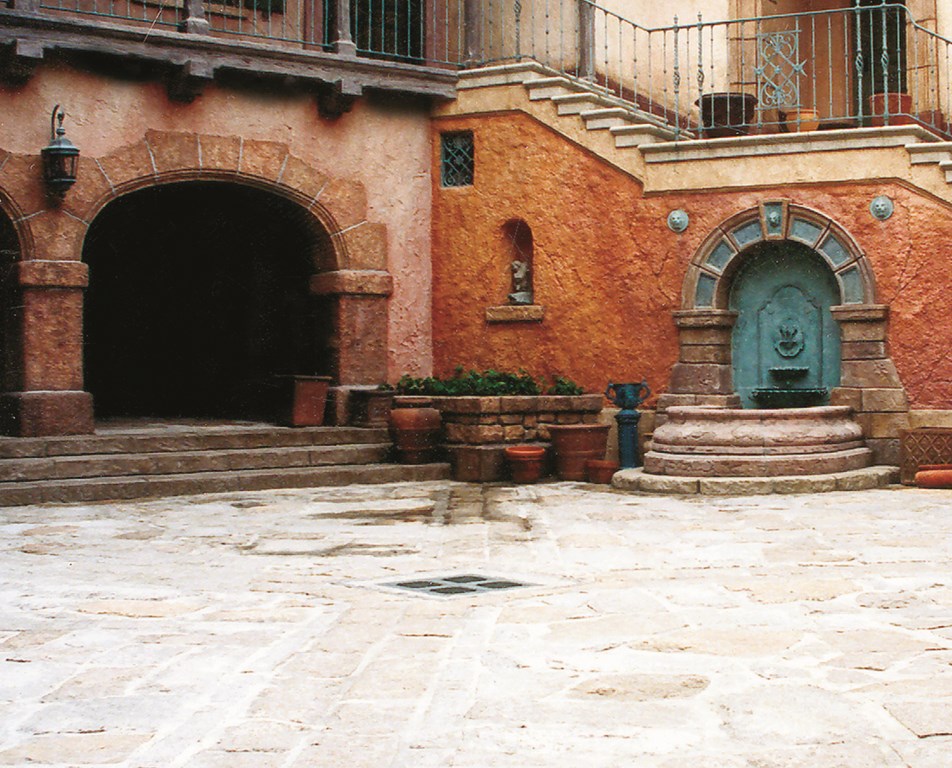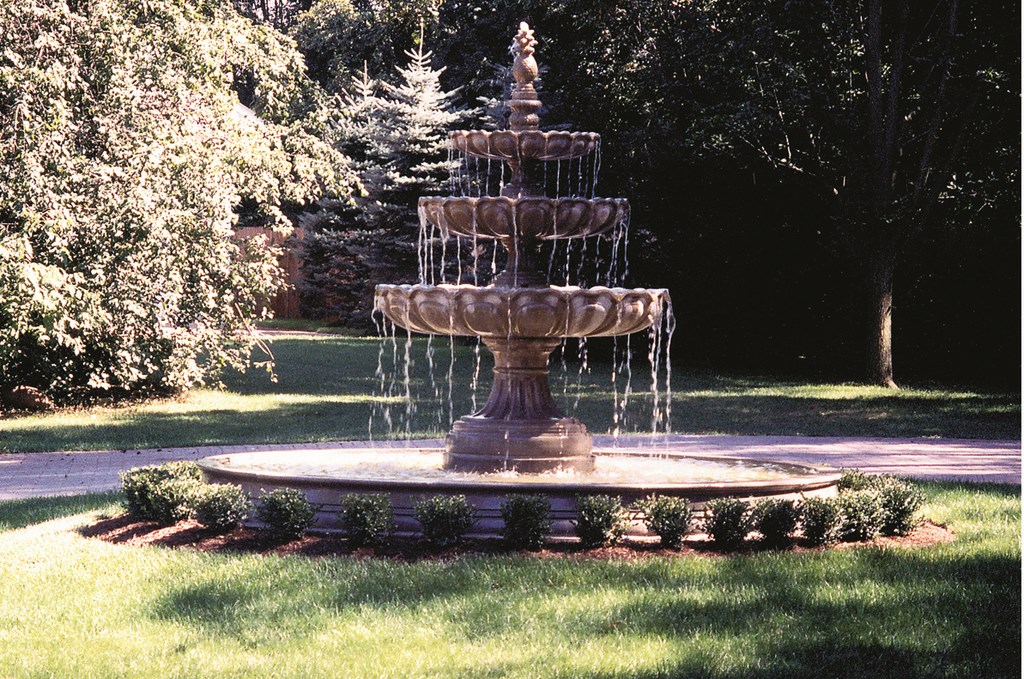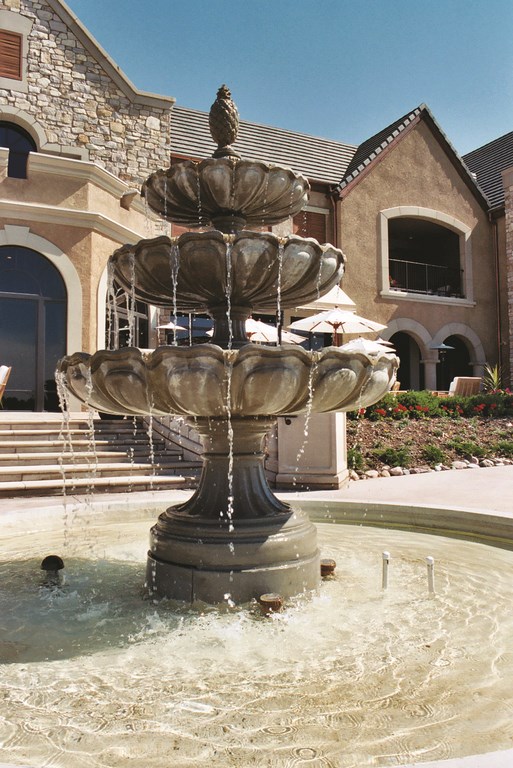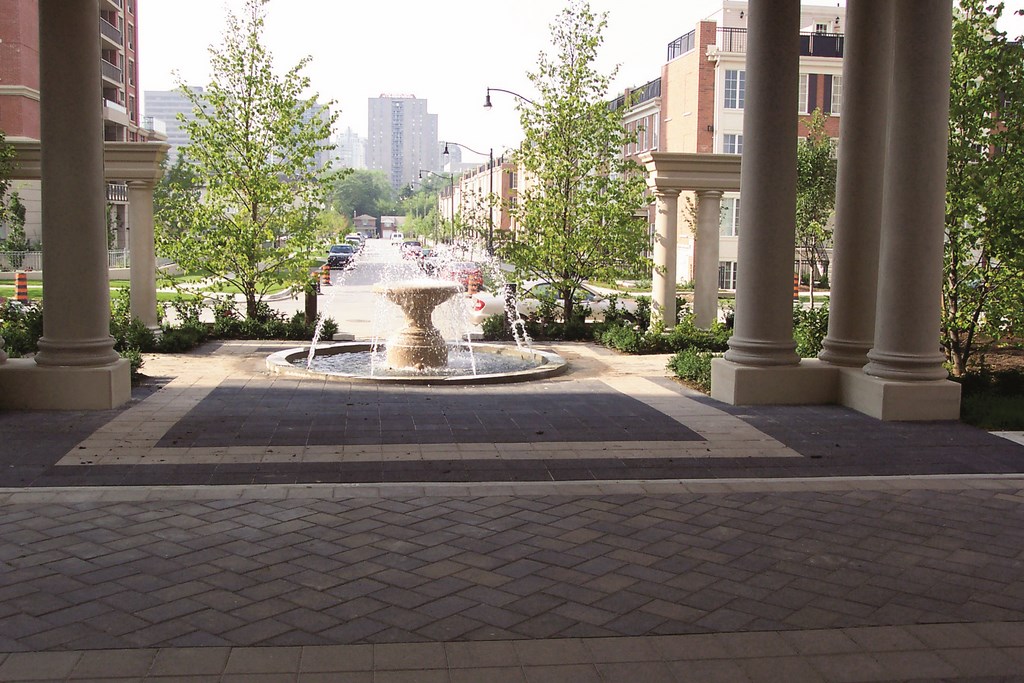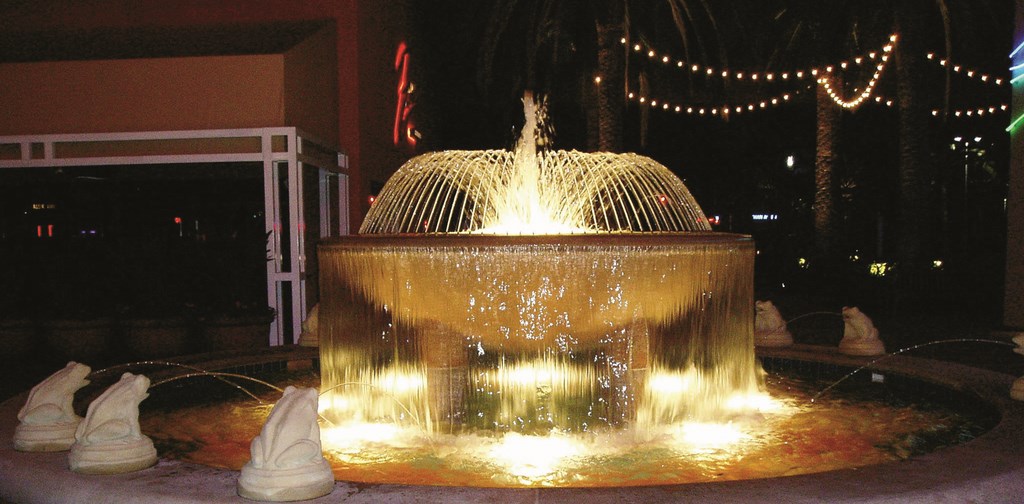Classic Figures

It’s amazing how the traditions of art and craft tracing back through centuries still inform today’s designs.
That’s particularly true in the field of garden ornamentation, where modern statuary, fountains, vases and seating elements take their cues from original works found in ancient Greece and China, in Renaissance Italy and France – and from just about every other era and location around and between.
This depth of available imagery is both a boon and a challenge to those in the business of supplying garden ornaments to today’s architects, landscape architects, watershapers and their clients. There’s just so much from which to choose.
In this article, I’ll survey as much of that range of styles and options as space will allow and discuss the way one company – Kenneth Lynch & Sons of Wilton, Conn. – approaches the selecting, manufacturing and placing of the pieces that lend authenticity and fine detail to both watershapes and landscapes.
A BIT OF BACKGROUND
At Kenneth Lynch & Sons, we offer fountains, statuary and other garden ornaments of all types, from weather vanes to Japanese stone pagodas. We make them using thoroughly modern techniques, but we also stand in line with traditions stretching back through centuries of creative endeavor.
The company’s founder, Kenneth Lynch, was the son of Irish immigrants and came from a family with a 300-year history of ironwork craftsmanship. While serving in the military, he traveled the world and was always inspired by the arts and crafts he encountered.
| Kenneth Lynch was an enthusiastic traveler and avid collector, and pieces he acquired while on the road in Europe and Asia still stand as the foundation for his namesake company’s catalog. Statuary, pedestals, planters, wall sconces, urns and more are available in various materials and finishes, each one modeled on a classic original. |
Later, after completing his apprenticeship as an ironworker, he started his business and set about transmitting what he’d observed of those traditions into modern-day settings. Before long, the catalog of products included statues, fountains, benches, weathervanes, cisterns, rosettes, sundials and various other classical ornaments – a tradition of collecting upheld and expanded for the past 35 years by Kenneth Lynch’s youngest son, Timothy Lynch.
From the start, it has been a made-to-order business: When architects, landscape architects or watershapers and their clients have decided they want to use one of these pieces, it’s never pulled off a shelf: Instead, all pieces are manufactured on demand. This is the means by which Lynch tied his operation, emotionally and conceptually, to the fullness of the craft tradition.
Through the early years – that is, from about 1930 until the late 1950s – iron, bronze and lead were his media of choice. Inspired by the increasing ease of international travel, he began making frequent trips to Europe and Asia for the sole purpose of purchasing statuary and other works of art.
| Many of the pieces are more architectural in orientation and nature – right at home in courtyards and formal gardens. But the applications of these ornaments are truly limitless, with designers finding uses in waterscapes and gardens of every style, type and size. |
Through the years, he purchased thousands of pieces from a list of locations and a range of eras and styles too long to enumerate here. Once the collection reached what he considered its critical mass, he brought in a team of master craftspeople to create an inventory of molds he could use to make castings of the original works.
All of this was helped by the fact that Lynch had both an amazing eye for visual quality as well as the broadest possible range of tastes. While he published mail order catalogs practically from the beginning of his business, the first really noteworthy compendium of available products was published in 1966, and the company has been engaged in reproducing the pieces he collected ever since.
Some of the originals are still on display and in storage at the company’s headquarters, and reproductions can be seen in various public and innumerable private locations throughout the United States and as far away as Japan.
GETTING INVOLVED
Transferring these art pieces into today’s water- and landscapes is about considering each project from the standpoint of the setting and the clients’ needs. In that respect, the company is not unlike other participants in the design/build process: Our aim is to have our work appear in the most appropriate and effective context.
To that end, we take a hands-on approach in working with our clients in the trades and with those who’ve hired them to design and/or build their spaces. Again, these are not off-the-shelf artworks: In many situations, pieces can be customized, and there are hosts of standard variations that can be applied to tailor them to specific needs.
| In refined residential settings, fountains can be assembled and configured in various ways according to the designer’s or installer’s needs – as self-contained units, for example, or set up for external plumbing connections. |
In some cases, the range of possible variations is narrow, as with benches or small statues. But with design elements such as fountains, the possible combinations of features usually entail a tremendous amount of back-and-forth discussion related to the size of the feature, its plumbing requirements and an assortment of aesthetic details.
All of our “stone” products are actually made of concrete. Indeed, we don’t produce anything made of cut or shaped natural stone, instead working with various mixes of limestone aggregate, masonry sand, Portland cement and concrete super-plasticisers – with just enough water added to make the material workable.
The molds have latex surfaces that capture the finest details of the original pieces, right down to slight imperfections or even the remnants of seashells embedded in the originals’ weathered limestone. The latex is backed by a sturdy fiberglass shell that holds the whole thing together – and also provides the strength and rigidity required to maintain shapes when the heavy, wet concrete is poured into the mold.
| The range of fountains available to watershapers is almost limitless, especially when it comes to grander commercial spaces: Many of the components (finials, bowls, pedestals and splash pools) can be interchanged to achieve just the desired look, and it’s possible to vary flows and include features such as lighting in ways that make almost every installation unique. |
Lynch believed in the power of art and had a singular appreciation for the variety of fine details that could be transmitted into cast stone – subtle facial expressions in the human forms, for example, or remarkable details in the botanical motifs that adorn many of the architectural pieces, particularly the benches and fountains.
Unless specifically requested, the company tries not to change the intent of the original artist (for more on this, see the sidebar below). When a piece is altered somehow, it’s generally along the lines of changing the configuration of a base supporting a sculpture. In other words, we won’t re-sculpt pieces or do things like remove arms to invoke a latter-day Venus de Milo effect.
FINDING FOUNTAINS
As suggested above, in no area is a healthy give-and-take about choices and possible combinations of design elements more important than it is with fountains.
Consider something as straightforward as a wall fountain: What kind of basin will be used to catch the water? Will the structure include lighting fixtures? What kind of water flow is desired – and what sorts of plumbing configurations will be needed as a result? Will the recirculating pump be contained within the fountain structure, or located remotely? The answers here dictate how the fountain will be set up.
|
Original Intent As a rule, we stick to the original artist’s intent in reproducing and manufacturing replicas of their work. Occasionally, however, we are asked to customize pieces to one degree or another. In uncommon and extreme cases, we’ve hired sculptors to recreate given pieces in larger sizes – an expensive proposition, but one that comes up from time to time. Far more commonly, we achieve custom looks by tailoring the color of a standard piece using concrete pigments or dye stains. Mostly, however, the wide variety of figures we carry in various shapes, sizes and styles enable clients to find some piece or other that doesn’t require tremendous alterations to work in their spaces. — M.L.D. |
Then there’s a whole range of aesthetic determinations, including the scale of the piece, where it will be placed in the landscape, its relationship to architectural structures and other watershapes and the piece’s overall role in the environment as either a focal point or as a member of the supporting cast.
Scale is particularly important, and we’ve found that even accomplished designers often ask for features, either too big or too small, that just don’t fit the available space.
Fountains typically consist of multiple elements, usually starting with a statue or some ornamental figure at the center and moving on to various bowls and the pools and basins that capture the water for recirculation. Experience shows that a great deal can be done with a relatively small amount of water if all issues are considered and the piece is planned and selected correctly relative to the setting.
The pool or basin is often the most crucial design element for a fountain – a decision made difficult by the fact that these vessels are available in a huge range of shapes, sizes, heights and styles. Many include beautifully shaped curbing components, while others work completely with combinations of fountain bowls.
|
Alternative Materials While the preponderance of ornaments offered by Kenneth Lynch & Sons are made of cast-concrete, the company still produces a number of products in metal – iron, copper and brass. A specialty material of increasing popularity is 99.5-percent pure lead, which can be used for wall fountains, statuary and even small pool basins – although one of the classic applications is as a cistern with a spout For these products, of course, we recommend that safeguards be taken to avoid any repeated ingestion of water that might be contained in, say, a birdbath or fountain made with lead. We also use wood in some cases. With many of our park benches, for example, we use Ipe (Tabebuia) wood – naturally antifungal, very dense and very hard. Some of these benches feature iron castings made with break-resistant ductile iron. We also produce wrought-iron benches in various styles, shapes and sizes. — M.L.D. |
Experience tells us as well that managing splash patterns is crucial. As a rule, we recommend that a basin’s diameter should double the height of the selected jet of water. And then there’s pool depth, which plays both aesthetic and functional roles: Some of these vessels are intentionally made to be very shallow with very little water standing in the bottom. In other cases, greater depth is desired so clients can dangle their feet in the water to cool off on hot summer days.
In a similar vein, interactivity has become a key desire among clients in recent years. Often, we equip animal statuary with spray nozzles to create whimsical play features for a range of settings, including dozens of parks and other recreational facilities.
Finally, we make extensive (and generally welcome) recommendations about sound and have developed expertise in knowing the volume and quality of noise various fountain configurations are going to make. This is often an overlooked factor, but it is something we urge both designers and clients to consider.
No two clients are alike, of course, and every situation seems to provide a new set of needs that challenge designers to find the best possible combinations of design elements.
As we see it, we serve as intermediaries between designers (and clients) and design traditions that reach back hundreds and even thousands of years. When it comes to individual spaces and how all the details come together, it’s all about making emotional connections and, for us, translating Kenneth Lynch’s true passion for travel and collecting to new generations.
Maria Lynch Dumoulin is vice president of manufacturing for Kenneth Lynch & Sons, a manufacturer of statuary, garden-art and fountain reproductions based in Wilton, Conn. She is the granddaughter of company founder Kenneth Lynch and daughter of the current president, Timothy Lynch, and Hilde Lynch, vice president. She has worked in the business for 11 years, beginning her career with hands-on experience in the manufacturing department.










